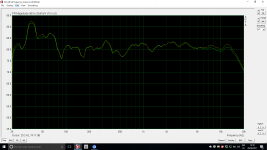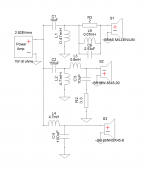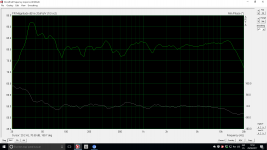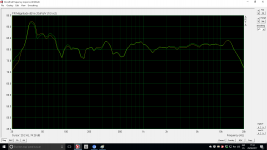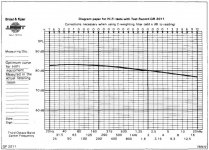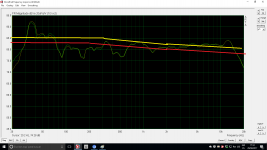Finally today listened the filtered loudspeaker, at the moment I don't do any change, maybe in the future I will play with the attenuation xover resistor value but only when I finished the other channel filtered.
Finally today listened the filtered loudspeaker, at the moment I don't do any change, maybe in the future I will play with the attenuation xover resistor value but only when I finished the other channel filtered.
You mono, you boom box, you garage speaker guy ? 🙄😀
Lookin' forward to hear about your listenin' impressions...😛

Last edited:
Curiously subjectively speaking today the tweeter sounds cleaner and less agressive with the RLC than yesterday with the resistance of 1R5, I imagine weather things because yesterday was raining and the relative humidity.
It's a question of personnal taste but id rather attenuate a little the 2-3k range instead, without LCR, just increasing L1 to 0.7 or 0.8 and reducing somewhat C1...🙄
Imho at long listening distances like yours it's important to preserve energy in the last top octaves to avoid excessive dark sound. Thats why i prefer Eq the response ( shelving up the top high) than straight attenuation.
FR & Phase Seas 9uF 0.8mH.
Probably too much...
Btw, the phase information is redundant: if FR is aprox flat, minimum phase is aprox flat too, these things are directly tied...
And the phase ( excess phase included) of a room curve has no interest at all, except maybe for DRC fetishists... I'm not!

Yes but these things are better seen with a classical gated measurement at 0,5-1m distance, not from a room curve.
Btw, as a room curve, it now seems that you have a rising response at the last top octaves, which i think is totally overkill at a 4m listening distance.
Imho, the BK curves give a good aprox of how a room curve should measure at the top octaves, slightly decaying, not flat nor rising.
To obtain that BK curve you generally need a tweeter with a rising response, or Eq your tweeter to obtain that result, but, i insist, the result for the room curve is not so.
Of course a tweeter that measure dead flat anechoic, also sounds and measures dead falling in room.
In spanish words, agudos planos anecoicamente suenan capados y miden caidos en puntoscucha. Hay que hormonarlos algo, pero sin pasarse...😀
Btw, as a room curve, it now seems that you have a rising response at the last top octaves, which i think is totally overkill at a 4m listening distance.
Imho, the BK curves give a good aprox of how a room curve should measure at the top octaves, slightly decaying, not flat nor rising.
To obtain that BK curve you generally need a tweeter with a rising response, or Eq your tweeter to obtain that result, but, i insist, the result for the room curve is not so.
Of course a tweeter that measure dead flat anechoic, also sounds and measures dead falling in room.
In spanish words, agudos planos anecoicamente suenan capados y miden caidos en puntoscucha. Hay que hormonarlos algo, pero sin pasarse...😀
- Status
- Not open for further replies.
- Home
- Loudspeakers
- Multi-Way
- Xover to filter woofer SB 23NRSX45-8
